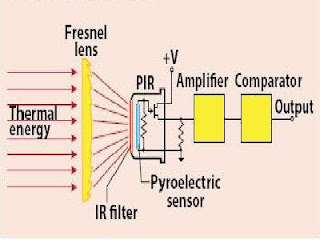decepticon
Newbie level 6

- Joined
- Dec 25, 2011
- Messages
- 14
- Helped
- 0
- Reputation
- 0
- Reaction score
- 0
- Trophy points
- 1,281
- Location
- Solar System
- Activity points
- 1,384
Hi,
I got a new PIR sensor (lhi 968) and tested it. The following are the connections that I made
GND pin : ground
D pin : +5V dc supply
S pin : CRO (to view the output)
But no matter how I tried to trigger the circuit (waving hands, blowing air, boogie dancing) the sensor gave a constant output of 0.8V. What's the problem?
I got a new PIR sensor (lhi 968) and tested it. The following are the connections that I made
GND pin : ground
D pin : +5V dc supply
S pin : CRO (to view the output)
But no matter how I tried to trigger the circuit (waving hands, blowing air, boogie dancing) the sensor gave a constant output of 0.8V. What's the problem?



